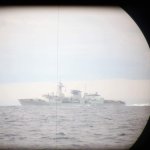I would like to point to the numbers and types of combatants foreseen in other, similar, navies.
I refer to UK, France, Italy and to some extent to Australia.
All of them are working as to have a fleet of about 12 (Aus) to 19 (UK) combatants, not just patrol boats, ready by about 2030s.
All the europeans will include in these numbers 3 types of frigates/destroyers: AAW (Type 45, Horizon both french or italian type & Hobart) , ASW (type 26, Fremm and Hunter class) which may be called as well multipurpose, and light/multipurpose frigates (type 31, FTI, PPA).
For logistics, commonality, training and manning reasons i may agree that only two types of combatants may be the best choice, like the aussies have done. But there should be at least 2 types.
Specially considering the long time provided for delivery of the 15 CSC. By the time the last 4-5 units are being laid off, some systems will no longer be state-of-the-art and some new requirements may have come up to be included in the combatants.
Therefore I would like that either...
1) CSC are provided in two types, as originally depicted but now seems to have been forgotten, or
2) CSC (of only one type) should be limited to 9-12 units and by mid-production DoD should start the requirements and design process for a 2nd type of 4 to 6 updated combatants fitted for new roles.
IMHO. :




